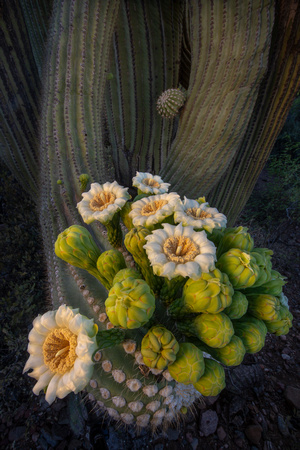The Offering
The night blooming white and yellow flowers appear April through June and the sweet, ruby-colored fruit matures by late June. Saguaro flowers are self incompatible thus require cross pollination. Large quantities of pollen are required for complete pollination as there are numerous ovules. A well-pollinated fruit will contain several thousand tiny seeds.
The major pollinators are bats, primarily the lesser long-nosed bat, feeding on the nectar from the night-blooming flowers, which often remain open in the morning. There are a number of floral characteristics geared toward bat pollination: nocturnal opening of the flowers, nocturnal maturation of pollen, very rich nectar, position high above the ground, durable blooms that can withstand a bat's weight, and fragrance emitted at night. One additional evidence is that the amino acids in the pollen appear to help sustain lactation in bats. The flowers remain open into the daylight hours and continue to produce nectar after sunrise. Doves and bees appear to be the primary daytime pollinators.


